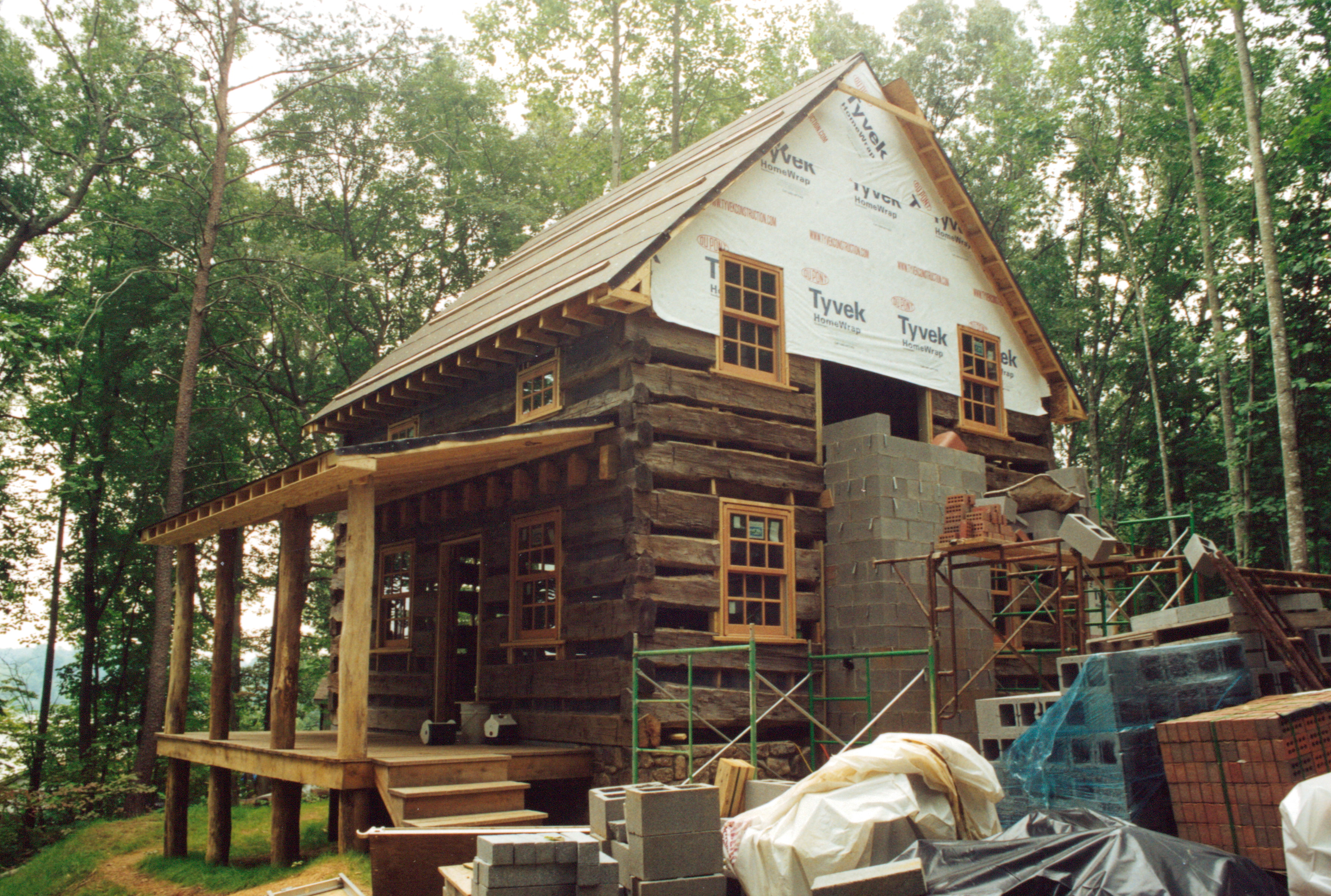

#Building a log cabin from landscape timbers windows
They share certain design conventions: open layouts, cathedral ceilings, walls of windows framing great views, intricate roof trusses and soaring fireplaces.Both flourished in early America, then fell into relative obscurity until the mid-1970s, when log homes and timber framing experienced first a revival and then a boom.Both use big timbers (round or square) as a base, skillfully, even artfully, fitted together to form a load-bearing structure.Both are custom homes, individually designed and produced, sold disassembled and built according to a precise building system.Here are their most significant similarities: Incidentally, although timber framing is a very old craft, yesterday’s timber frame homes were a far cry from the open, cathedral-ceiling homes that many people associate with timber framing today.įor such remarkably different homes, timber and log homes have a lot in common. This allows them to fit in with surrounding homes and subdivisions with ease. Timber home exteriors typically offer just a hint of the extensive woodwork inside. The frame’s interlocking configuration eliminates the need for load-bearing interior walls, creating wide-open living spaces. Embellishments to the frame include chamfering, pendants and other decorative carvings. Timber framing is a specialized version of post-and-beam construction that relies heavily on handcraftsmanship to shape the timbers and fashion mortise-and-tenon joinery held in place with wooden pegs rather than metal fasteners. This interlocking frame supports the home’s load and transfers its weight to the foundation.

Whereas log homes are comprised of horizontal stacked logs, timber frames are post-and-beam homes, which employ a big-timber framework, akin to a skeleton, of upright posts supporting horizontal beams. Timber frame homes were the earliest permanent residences built in England’s American colonies and remained the dominant building method until the development of balloon framing, which required little skill to build and answered the growing demand for hastily built mass housing. From there, log style (round, square, Swedish cope, D-shaped, shiplap), interface styles (tongue-and-groove, chinking) and corner style (dovetail, saddle-notch, butt-and-pass, corner post) all contribute to a log cabin’s look and performance and will be part of the decision-making process. For starters, milled log homes have uniform log diameters and shapes, whereas handcrafted logs vary in size, shape and texture. But from there, there are myriad choices that make them distinct. Yet not all log homes look alike.įull-log homes are made by stacking the logs horizontally to form the interior and exterior walls. If you saw pictures of 100 different houses and only one of them was a log home, you’d identify it immediately. You notice them in movies, on television and in advertisements. And because timber homes can use a variety of exterior materials having nothing to do with the inside, they may not be recognizable as timber homes from the outside, whereas log homes are almost always easily identified.įor hundreds of years, log cabins have been an enduring symbol of the American frontier and associated with various presidents, most notably Abraham Lincoln. As a result, each achieves a sharply different look. Though log and timber homes are close cousins, the main distinction between them is how the wood is used. Having a solid understanding of the similarities and differences between log and timber frame construction can help you as you plan your cabin. Although modern log and timber houses incorporate a variety of other building materials, such as stone, glass, drywall and metal, it’s the wood that is their defining characteristic. Indeed, log and timber homes can assume many architectural styles while remaining recognizable by their primary building material.


Log and timber cabins are about the way they’re built and what they are made of. The quality of the building material or workmanship may play a significant role (certainly it affects the cost/value), but the appearance of log and timber cabins and the emotional element is at the core of their popularity. Most people choose a log or a timber cabin because they love the look. Owning a log or timber cabin is more than just home ownership it’s a lifestyle choice.


 0 kommentar(er)
0 kommentar(er)
